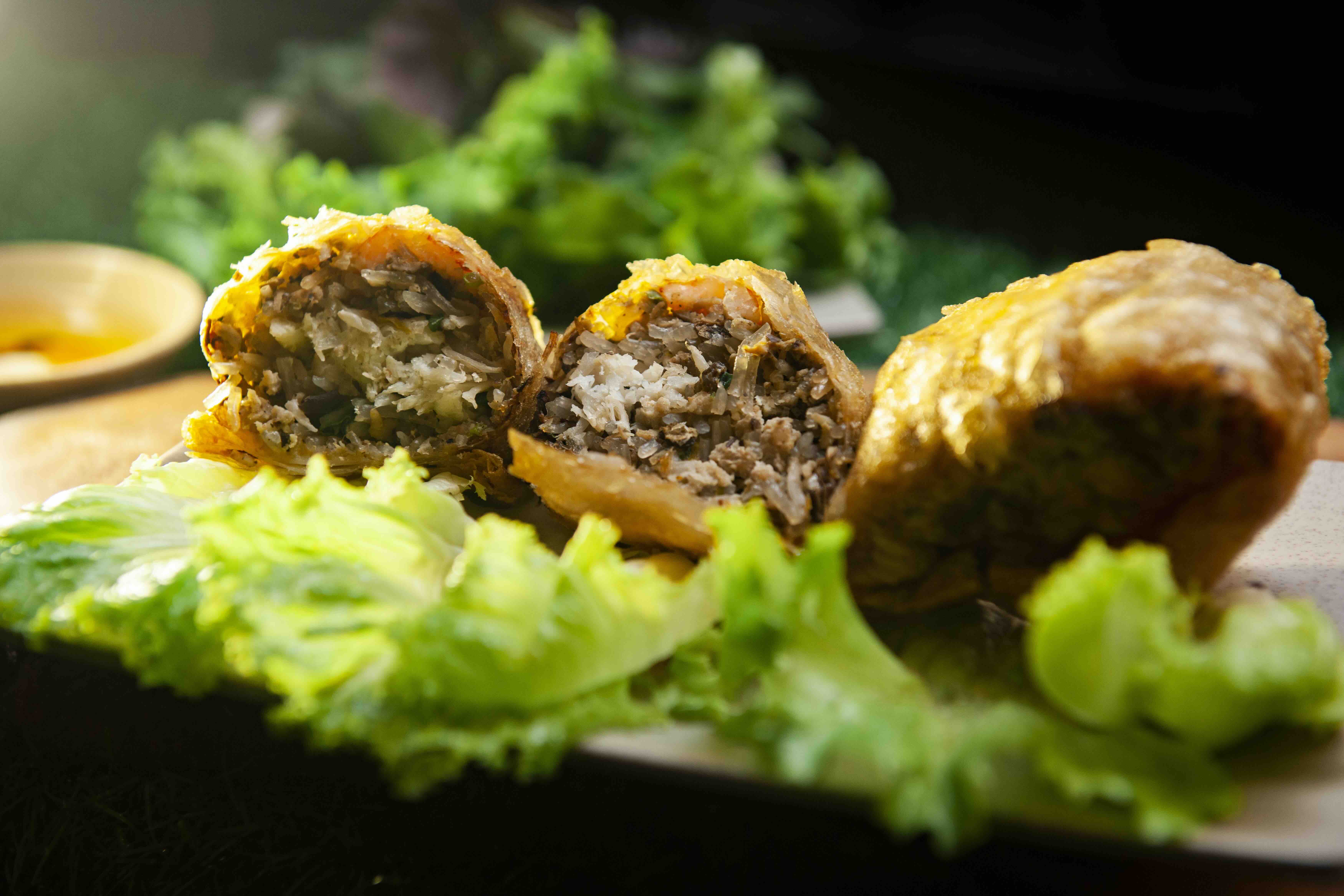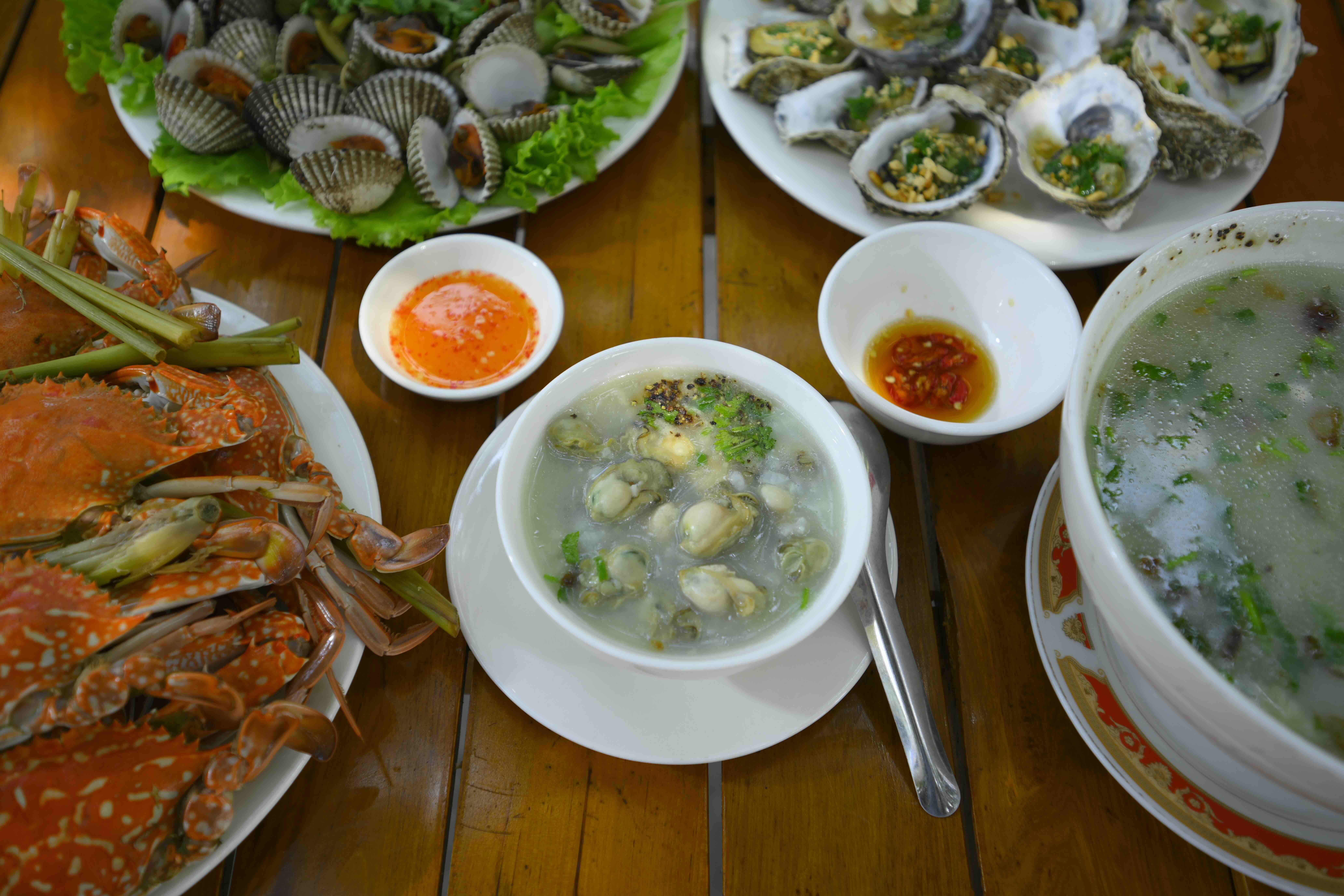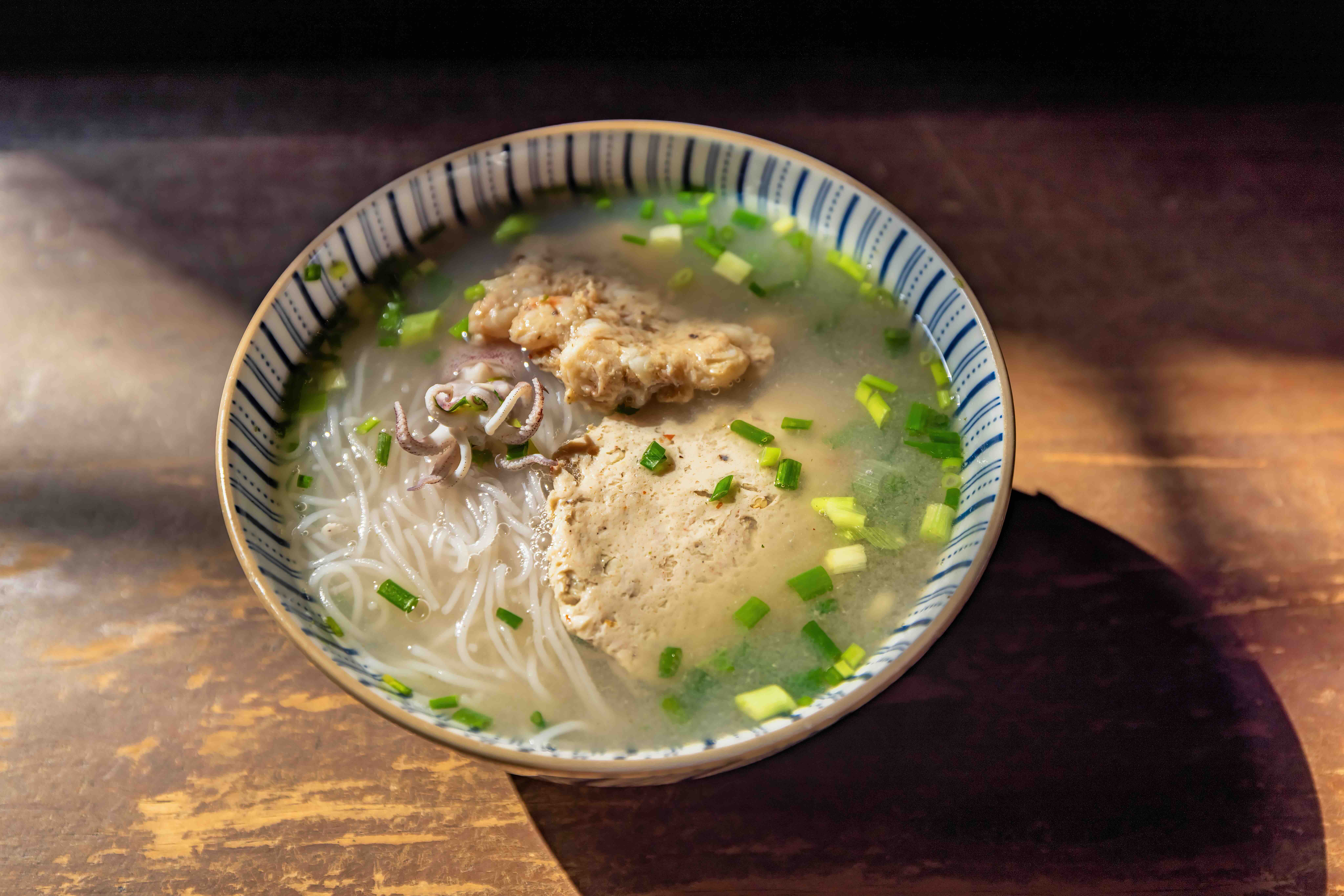Story: Le Anh
Photos: Tonkin, Amachau, Le Trung
Amid the salty wind and sun of Vietnam’s coastal regions, people come to the seaside not only to hear the crashing waves or watch the sun rise and set, but also to savor dishes brimming with ocean flavors. Traveling along the length of Vietnam, wherever people fish for a living, you will find a unique culinary culture. Just a steaming bowl of oyster porridge by O Loan Lagoon in Phu Yen, a bowl of bun quay brimming with shrimp, squid, and fish cakes on the “Pearl Island” of Phu Quoc, or a plate of crispy crab spring rolls in Hai Phong is enough to leave a lasting impression of the land beneath your feet. These dishes are not only delicious thanks to the fresh ingredients gifted by nature, but also because of the skilled hands and heartfelt devotion of those who call the seaside their home.

Crispy crab spring rolls in Hai Phong
On any list of Hai Phong’s delicacies, crab spring rolls (nem cua be) are a must. While people all over Vietnam love to serve traditional long spring rolls to foreign friends, Hai Phong locals are proud to present their version. Unlike the classic rolled spring roll, nem cua be are wrapped into plump, square parcels filled with a hearty blend of crab meat, shrimp, minced pork, vermicelli, wood ear mushrooms, shiitake mushrooms, bean sprouts, and fried shallots—all tightly packed in thin rice paper. When fried, the outside becomes golden and crisp, while the inside bursts with the rich aroma of crab and the deep flavors of the sea. These spring rolls are typically served with vermicelli, fresh herbs, and a fish sauce dip that’s sweet, sour, salty, and spicy. Whether enjoyed at a family table, a humble street stall, or a refined restaurant, each square roll carries the bold and generous spirit of this northern port city.

Oyster porridge from O Loan Lagoon
In Phu Yen, O Loan Lagoon is not only famed for its tranquil beauty, but also for a humble specialty: oyster porridge (chao hau O Loan). Locals say oysters are available year-round, but they’re at their plumpest and sweetest in early summer. To harvest these shellfish, fishermen set out before dawn to pry them off rocks and bridge piers with sharp knives, cracking open the rugged shells to retrieve the soft, fat flesh. At O Loan, visitors can enjoy a variety of dishes made from fresh oysters—grilled oysters with scallion oil, cheese-baked oysters, oyster soup, etc. Yet above all, few can resist a steaming bowl of oyster porridge, rich with the flavor of the sea. The porridge’s base is red rice with a touch of sticky rice, simmered to a creamy texture. The oyster meat is marinated, sautéed with lard and shallots until fragrant, and poured into the pot of porridge. Ladled into a bowl and topped with scallions, coriander, and a dash of pepper, it becomes a hearty, ocean-flavored meal.

Stirred noodles from Phu Quoc
First-time visitors to Phu Quoc are always curious to sample bun quay. The dish’s name sounds strange, translating as “stirred noodles”—a reference to how it’s prepared and eaten.
Some say it’s a variation of shrimp noodles from Binh Dinh. In Phu Quoc, what makes bun quay special is that all ingredients are fresh and made to order. The bowl of noodles features freshly pressed, piping hot rice vermicelli, accompanied by shrimp paste, fish paste, or finely minced squid, all spread raw onto the bowl’s inner surface before being doused with hot broth to cook naturally. The broth doesn’t rely on distinctive seasonings or elaborate bone stock but is light and clear, highlighting the natural sweetness of the seafood. However, the true “soul” of the dish lies in the dipping sauce, which diners mix to their taste. Each diner combines salt, sugar, chili, calamansi or lime, pepper, and MSG to create their customized dipping sauce, which is vigorously stirred to blend the flavors. Dip a piece of just-cooked fish or shrimp cake into your newly mixed salty, sweet, sour, and spicy sauce, and you’ll understand why this noodle dish has such a fun and endearing name.
Amid the vast waves and boundless sun and wind, these humble coastal dishes serve as a bridge, connecting people with nature and the present with cherished memories of home.










